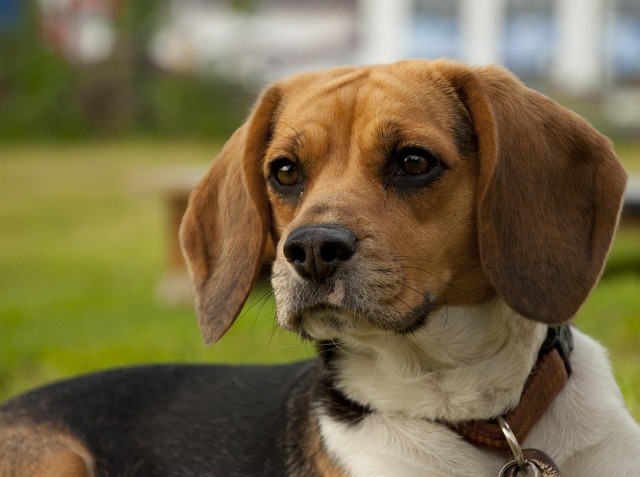
How do i train my dog to be obedient?
Watching your dog dart across the park ignoring your calls isn’t just frustrating—it can put them at risk near busy streets or public spaces.
Bringing home a new puppy fills your dayschewing shoes—there’s one question that often tops the list: when should my puppy be fully toilet trained? The answer isn’t black and white, but understanding their development and how to guide them gently can turn those messy accidents into proud milestones.
Let’s start with biology. Most puppies leave their litter around 8–12 weeks old, and at this stage, their bladder and bowel control are still developing. A 2-month-old puppy can usually hold it for just 1–2 hours, which is why accidents happen frequently. By 4 months, that increases to 4–6 hours, and by 6 months, many can manage 6–8 hours overnight. But “fully trained” doesn’t mean perfection—it means your puppy understands where to go and signals you consistently, which often takes 4–6 months for most dogs, though some may take longer.
Timing matters: you can start training as soon as they arrive home, but expectations must be realistic. Puppies aren’t being “naughty” when they pee indoors—they’re simply learning. The key is consistency: take them out immediately after waking, eating, playing, and before bed. Choose a designated spot , use a consistent command like “go potty,” and praise enthusiastically when they succeed. This builds a positive association they’ll remember.
Cultural and legal considerations play a role too. In many countries, public nuisance laws require dogs to be toilet trained to avoid fines or complaints. Teaching your puppy to go on command not only helps with training but also ensures they can relieve themselves in appropriate places during walks, especially in urban areas where green spaces are shared. It’s part of being a responsible owner and a good neighbor.
 What about setbacks? Accidents are normal, especially if your puppy is teething, stressed, or experiencing a routine change. Never scold them afterward—they won’t connect the punishment to the act and may become anxious. Instead, clean the mess thoroughly with an enzymatic cleaner to remove the scent (which attracts them back) and focus on reinforcing the correct behavior. If accidents spike suddenly, consult your vet to rule out urinary tract infections or digestive issues.
What about setbacks? Accidents are normal, especially if your puppy is teething, stressed, or experiencing a routine change. Never scold them afterward—they won’t connect the punishment to the act and may become anxious. Instead, clean the mess thoroughly with an enzymatic cleaner to remove the scent (which attracts them back) and focus on reinforcing the correct behavior. If accidents spike suddenly, consult your vet to rule out urinary tract infections or digestive issues.
Older puppies often have better self-control, but training should still be patient and positive. Some breeds, like Huskies or Bulldogs, might take longer due to stubbornness or slower maturity, while others, like Poodles or Retrievers, may catch on faster. Rescue puppies or those with unclear early histories might need extra time—their past environment could have delayed toilet training, so kindness and consistency are even more important.
A common myth: you can’t start training until they’re “old enough.” Wrong! Early exposure to a routine—even at 8 weeks—lays the foundation. Puppies learn best through repetition, so those first weeks are about building habits, not expecting perfection. Use baby gates to limit their space if you can’t supervise them, so they’re less likely to soil where they sleep.
Nighttime training is another milestone. Most puppies can sleep through the night without accidents by 4–5 months, but younger ones might need a midnight potty break. Gradually extend the time between outings as their bladder strengthens, but always take them out last thing before bed and first thing in the morning. A consistent nighttime routine helps them feel secure and reduces indoor messes.
Remember, toilet training is a partnership. Your puppy looks to you for guidance, and getting frustrated only slows progress. Celebrate small wins—even a single successful outdoor pee is a step forward. If you’re struggling, consider consulting a certified dog trainer who uses positive reinforcement techniques, which align with animal welfare standards in most Western countries and are proven to be most effective.
In the end, there’s no strict“deadline”for toilet training. Some puppies master it by 4 months, others by 6, and a few might need gentle reminders until they’re a year old. The goal isn’t speed—it’s helping your puppy understand what you need from them in a way that builds trust, not fear. With patience, consistency, and lots of treats, those accidents will become a distant memory, and you’ll both enjoy a cleaner, happier life together.
Trust the process, stay attuned to your puppy’s needs, and remember: every dog learns at their own pace. Your dedication now will pay off in years of stress-free walks and a home that stays accident-free. Your puppy doesn’t just need training—they need you to believe in them, one successful“go potty”at a time.

Watching your dog dart across the park ignoring your calls isn’t just frustrating—it can put them at risk near busy streets or public spaces.

New puppy owners often find themselves rushing to clean up accidents before they set in, and that’s where puppy pad training becomes a game-changer.

If you've noticed your dog's waistline disappearing and your veterinarian has mentioned those few extra pounds, your first instinct might be to simply reduce the amount of food in their bowl.

Training a dog to use a designated spot indoors isn’t as daunting as many new owners fear, but it does take consistency and an understanding of your pet’s needs.

That moment of dread on a walk is all too familiar for many new dog owners. You see another dog approaching down the sidewalk of your neighborhood

If the sight of another dog on your neighborhood walk makes your heart sink as your own dog erupts into a frenzy of barking and lunging, you're not alone.